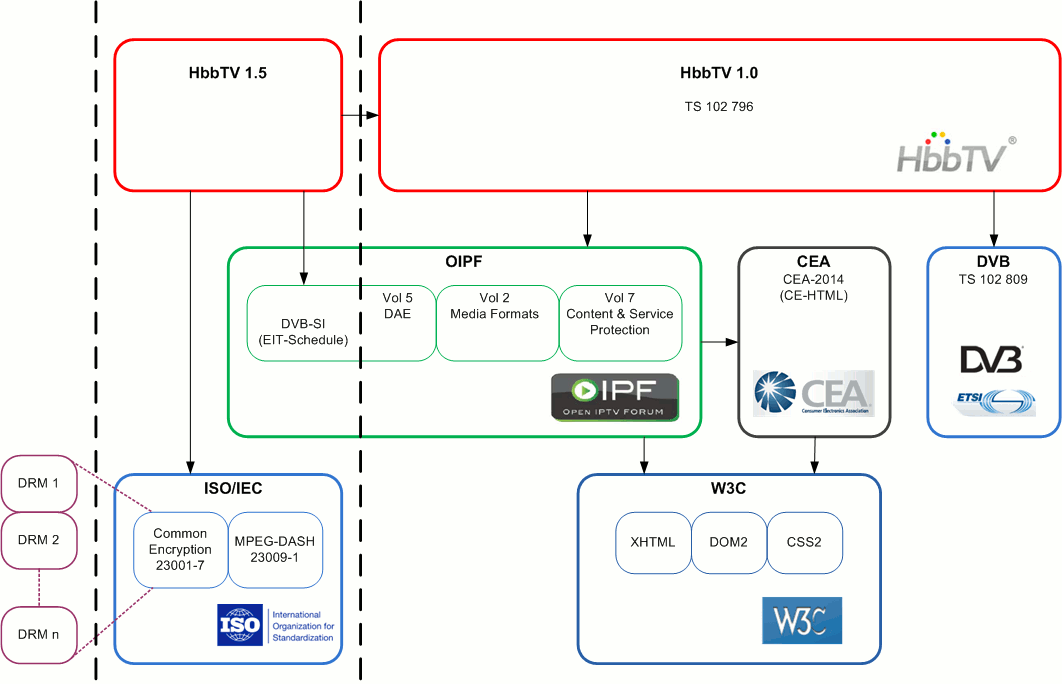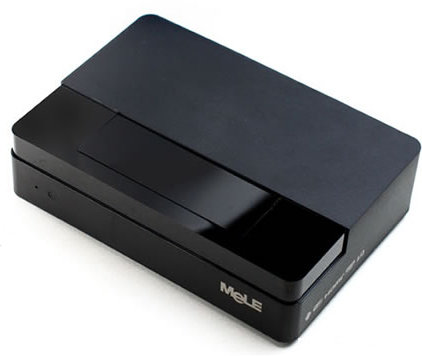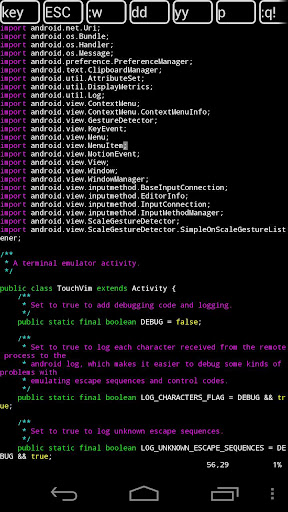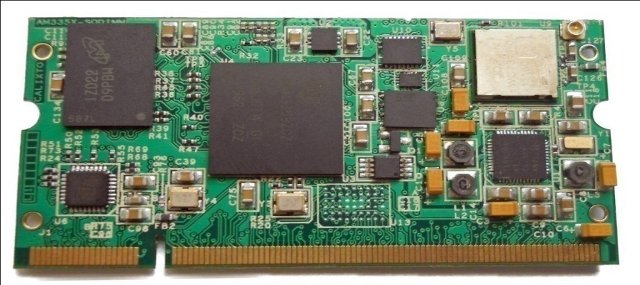The HbbTV (Hybrid Broadcast Broadband TV) consortium, an European initiative for web-based smart TV applications for TVs and set-top boxes, has recently released version 1.5 of the HbbTV specification. The latest specification adds support for HTTP adaptive streaming based on MPEG-DASH (ISO/IEC 23009-1), improving the perceived quality of video presentation on busy or slow Internet connections. It also enables content providers to protect DASH delivered content with multiple DRM technologies based on the MPEG CENC specification (ISO/IEC 23001-7). Finally, HbbTV Version 1.5 significantly enhances access to broadcast TV schedule information (DVB-SI EIT-Schedule), enabling operators to produce full 7-day electronic program guides (EPG) as HbbTV applications that can be deployed across all HbbTV receivers to provide a consistent user experience. The diagram above show the main improvement of HbbTV 1.5 over HbbTV 1.0 that is, as mentionned above, EIT-Schedule for EPG, MPEG-DASH for streaming video and MPEG CENC for multiple DRM […]
Nokia Qt Labs Releases Qt 5.0 Alpha
Nokia Qt Labs announced the alpha release of Qt 5 C++ application development framework, which focuses on the delivery of Qt Essential modules for Qt 5. This new version of Qt goal is to bring the focus to a model, although native Qt using C++ would still be used to implement modular backend functionality for Qt Quick. The developers explains that this module is working nicely on Qt for embedded system where UIs are full screen, but more work is needed on the desktop, and it will only be fully implemented in Qt 5.1 or 5.2. Qt developers make 4 big architectural changes to Qt internal architecture: Base all Qt ports on Qt Platform Abstraction layer (QPA) to make it easier to port Qt to other windowing systems and devices. Re-architect Qt graphics stack using a a Scenegraph on top of OpenGL to increase performance versus Qt 4, using Qt […]
Mele A2000 Android 2.3 Media Player Powered by AllWinner A10
Last month, I ordered a Mele A1000 in order to hack it to run Linux as it uses the same processor – the Cortex A8/Mali-400MP based AllWinner A10 – as the one planned for the low cost Rhombus Tech board. I have yet to receive the device, but Mele (迈乐) has already released the Mele A2000, an Android 2.3 set-box box also powered by AllWinner A10. Here are Mele A2000 specifications: CPU: ARM Cortex A8 AllWinner A10 @ 1 GHz (It can be apparently be overclocked up to @ 1.5GHz) GPU: Mali 4000 Memory: DDR3 512MB RAM / 4GB Nand Flash OS System: Android 2.3.4 (Upgradable to Android 4.0) External Storage: Supports SD card up to 32GB, supports 2.5″ SATA HDD up to 1TB, Supports max 16GB USB flash disk Video codecs: HD MPEG-1/2/4. H.264. HD AVC/VC-1, RM/RMVB, Xvid/DviX 4/5/6, RealVideo 8/9/10, VP6 Video Formats: ts, m2ts, tp, trp, mkv, mp4, […]
Green Hills MULTI 6.0 Compiler Improves ARM MCU Performance by up to 40%
Last week at Design West 2012, Green Hills Software announced it had achieved the highest compiler performance scores ever certified by EEMBC CoreMark and that it outperformed the nearest competing compilers by 35.5% using its MULTI 6.0 – Compiler 2012. Benchmarks were completed on 3 ARM Cortex-M4 microcontrollers: Freescale Kinetis K60 MCU @ 100 Mhz – 35.5% improvement over nearest competitor. Freescale Kinetis K70 MCU @ 120 Mhz – 29.6% improvement over nearest competitor. STMicroelectronics STM32F417IGt6 @ 168 MHz – 34.7% improvement over nearest competitor. Since apparently it’s bad marketing to name competitors in press releases, I went directly to the source (EEMBC Coremark benchmark results) to check out the results and competitors (IAR and Keil) for Kinetis K60 MCU. The first thing you may notice is that there are 2 tests per compiler / MCU combination. That’s because there 2 test configurations: Code in internal Flash – Data in internal […]
Vim Touch: Vim Editor for Android
Many Linux developers or admins use vi or vim in Linux to edit source or/and configuration files and some may want to use it in the go in their smartphone or tablets. Some hacks are available to install vim on Android via ADB on a rooted device, but now, it has all become nice and easy, as a touch enabled version of vim called VimTouch is also available on Android. VimTouch supports full vim syntax and finger touch gestures to help VIM much more usable on touch screens. This vim editor for Android includes the following features: Touch to scroll Fling to scroll Long press to zoom-in Two-fingers to delete lines (“dd”) or new lines (“p”) Single tap to send “ESC” Read email attachments Single instance to open files in vim window Real VIM runtime You would think it is rather cumbersome to use vi/vim on a mobile device, but reviews […]
Calixto Systems Announces TI AM335x VERSA SOM
Calixto Systems is a technology company based in Bangalore, India, providing System-on-Modules (SoM), evaluation boards (EVM) and consultancy services for Android, Linux and WinCE. The company has announced an update to its VERSA families of system-on-modules by including support for Texas Instruments Sitara AM335x processors. The previous version is based on TI OMAP-L138 C6-Integra DSP+ARM Processor. The AM335x SoM will provide higher performance than the previous module and targets industrial automation, smart grid, remote terminals, healthcare, handheld point-of-service (POS) terminals and weighing scales. Here are M335x VERSA SOM specifications: Texas Instruments AM335x (Cortex A8) processor @ 720 MHz with 3D Graphics Support (PowerVR) 256/512 MB of DDR3 SPI Flash Wireless LAN (b/g/n) (Optional) Bluetooth 4.0 (Optional) Two 10/100 Ethernet (One PHY on SOM) 24 bit LCD with Touch Screen interface 2x USB 2.0 OTG, 2x CAN, 4x UARTs McASP, PRU , SPI, I2C etc. 200 pin SODIMM connector Dimension: 34mm x […]
ARM Development Studio 5 (DS 5) Demos At Design West
ARM has shot a few video demos of their ARM Development Studio 5 (DS 5), a software development tool suite for ARM platforms, at Design West 2012. The first video shows DS 5 running on the Xilinx Zynq-7000 platform (dual cortex A9 + FPGA), and we can see the memory map, registers, call graphs and stack usage. We can also see real-time processor switching and the function that takes the most CPU resources (profiling). The second videos showcases ARM DS-5 Streamline, a performance analyzer, which helps determine how well programs are running on a Linux or Android platform, on an Samsung Exynos 4210 platform (Origen board?). This tool also to profile both the dual-core ARM Cortex-A9 and ARM Mali-400 MP GPU in the platform. We are shown three types of reports: CPU/GPU Loading Threads usage Power Usage per application The third and last video shows ARM DS 5 on Freescale i.MX6 […]
Express Logic Releases ThreadX-Lite RTOS for ARM Cortex-M
Express Logic has unveiled its ThreadX-Lite Real-Time Operating System, a priority-based, preemptive scheduling RTOS for ARM Cortex-M development. It is exclusively be available via IAR Systems and is integrated with the C/C++ compiler and debugger tool suite IAR Embedded Workbench. ThreadX-Lite is “designed to be small, fast, and easy-to-use, while maintaining the functionality and efficiency of a highly optimized RTOS”. ThreadX-Lite targets Cortex-M0, M0+, M3, and M4-based microcontrollers from Atmel, Freescale, Fujitsu, Infineon, NXP, STMicroelectronics, and Texas Instruments. ThreadX-Lite is a subset of ThreadX RTOS, both RTOS share features and capabilities packaged in an object library as well as ThreadX API, but it is not very clear what the differences between the two are from the resources available. Here are the key feature of this RTOS: Small-footprint (small as 2KB, automatic scaling) Fast execution (sub microsecond context switch) Unlimited threads, semaphores, timers, queues, block pools, byte pools, and event flag groups […]











